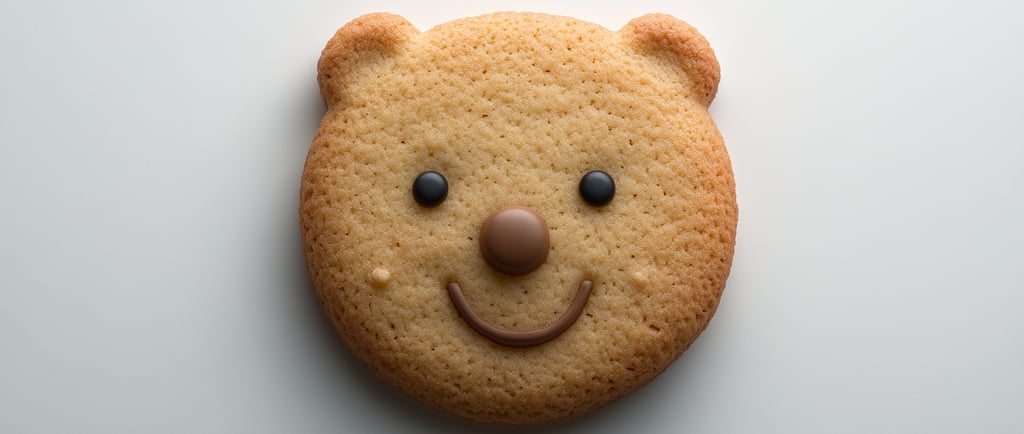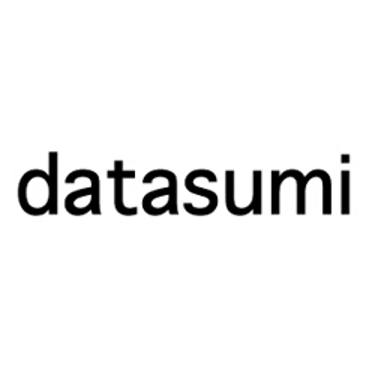Integration of AI tools in traditional artistic workflows
Explore the transformative impact of AI tools on traditional artistic workflows. Discover how AI enhances creativity, streamlines processes, and opens new artistic possibilities.


Imagine an artist's studio in the heart of Paris, filled with the scent of oil paints and turpentine. The artist, brush in hand, stands before a canvas, deeply engrossed in the creative process. Now, imagine that same studio equipped with advanced AI tools that can suggest color palettes, generate compositional ideas, or even create digital drafts based on the artist's style. This is not a scene from a distant future but a reality that many artists are embracing today. The integration of AI tools in traditional artistic workflows is revolutionizing the way artists create, pushing the boundaries of creativity, and efficiency. In this article, we will explore how AI is transforming artistic processes, the benefits and challenges it presents, and what the future holds for artists in this new era of technological innovation.
The Evolution of Artistic Workflows with AI
Historical Context
Artistic workflows have evolved significantly over the centuries, from the meticulous techniques of the Renaissance to the digital revolution of the late 20th century. Each technological advancement has brought new tools and methods that artists have incorporated into their practices. The introduction of AI is the latest in this series of transformations, offering unprecedented capabilities that augment traditional artistic techniques.
AI Tools in Contemporary Art
Today, AI tools are becoming integral to various artistic disciplines. For instance, generative AI can create unique compositions based on an artist's input, while machine learning algorithms can analyze and replicate styles from historical artworks. Tools like Adobe Sensei and Runway ML are at the forefront of this change, offering artists new ways to edit images, generate designs, and even create 3D models with greater efficiency and creativity1.
These tools are not just about speeding up tedious tasks; they open new avenues for artistic expression. For example, Runway ML allows artists to edit videos in real-time and experiment with generative design, pushing the boundaries of what is possible in media art2. Similarly, Artbreeder uses AI to blend images and create unique digital artworks, fostering a collaborative relationship between technology and human creativity2.
Benefits of Integrating AI in Artistic Workflows
Enhanced Creativity and Efficiency
One of the most significant benefits of AI integration is the enhancement of creativity and efficiency. AI tools can automate repetitive tasks, allowing artists to focus more on the creative aspects of their work. For instance, AI can generate multiple variations of a design or composition, giving artists a broader range of options to choose from. This not only saves time but also stimulates creative thinking by presenting new ideas and perspectives2.
Personalized Artistic Assistance
AI-powered tools can be tailored to an artist's specific needs and preferences, providing personalized assistance throughout the creative process. These tools can offer real-time feedback, suggest improvements, and even predict artistic preferences based on the artist's past work. This level of customization ensures that AI seamlessly integrates into the artist's workflow, becoming an intuitive extension of their creative process rather than a separate tool3.
Accessibility and Democratization of Art
AI tools are also making art more accessible to a broader audience. Platforms like Artbreeder and DALL·E 2 allow anyone to create art, regardless of their technical skills or artistic training. This democratization of art opens up new possibilities for collaboration and innovation, as more people can contribute to the artistic landscape. Moreover, AI-generated art can be shared and collected as NFTs, providing artists with new ways to monetize their work and engage with their audience2.
Challenges and Considerations
Authorship and Originality
While AI tools offer numerous benefits, they also raise important questions about authorship and originality. As AI becomes more involved in the creative process, determining who the true author of a piece is can become complex. Is it the artist who provided the initial input, the AI that generated the final output, or a combination of both? This question is particularly relevant in the context of AI-generated art, where the line between human and machine creativity can blur4.
Ethical and Privacy Concerns
The use of AI in art also brings ethical and privacy concerns. For instance, AI models trained on existing artworks could inadvertently replicate styles or elements from those works, raising issues of copyright infringement. Additionally, the data used to train AI models must be handled responsibly to ensure the privacy and consent of the individuals involved4.
Case Studies: AI in Action
AI in Museums and Galleries
The integration of AI in museums and galleries is enhancing visitor experiences through personalized tours and interactive exhibits. For example, AI-powered apps can provide visitors with tailored information based on their interests and preferences, creating a more engaging and immersive experience. This use of AI bridges the gap between digital and physical art spaces, offering new ways for audiences to connect with art5.
AI in Digital Art
In the realm of digital art, AI tools are transforming how artists create and share their work. For instance, generative AI can produce unique and eye-catching visual content, allowing artists to explore new creative territories. These tools can automate tedious tasks, suggest improvements, and predict artistic preferences, becoming invaluable assistants to digital artists3.
The Future of AI in Art
Emerging Trends
As AI technology continues to advance, we can expect to see even more innovative tools and techniques emerging in the art world. For example, AI could be used to create interactive and immersive art experiences, where viewers can engage with and influence the artwork in real-time. Additionally, AI could be employed to analyze and interpret art, providing new insights into its meaning and impact5.
Artistic Collaboration
The future of AI in art is also likely to involve increased collaboration between artists and technology. As AI tools become more sophisticated, they will be able to understand and anticipate artists' needs better, providing more intuitive and personalized assistance. This collaboration could lead to the creation of entirely new forms of art, pushing the boundaries of what is possible in artistic expression2.
The table below highlights some of the key AI tools currently used in artistic workflows, their features, and applications. This table is designed to be responsive and mobile-friendly, ensuring that readers can access the information easily on any device.
Conclusion
The integration of AI tools in traditional artistic workflows is revolutionizing the way artists create, offering unprecedented capabilities that enhance creativity and efficiency. While these tools present challenges related to authorship, originality, and ethical concerns, they also open up new possibilities for artistic expression and collaboration. As AI technology continues to advance, we can expect to see even more innovative tools and techniques emerging in the art world, pushing the boundaries of what is possible in artistic creation.
As artists embrace these new technologies, they are not merely adopting tools but forging a new partnership with AI, one that promises to redefine the future of art. Whether you are a seasoned artist or just starting your creative journey, the integration of AI tools offers an exciting opportunity to explore new horizons and elevate your artistic practice to new heights.
FAQ Section
What are the top AI tools for artists?
Some of the top AI tools for artists include Adobe Sensei, Runway ML, Artbreeder, Deep Dream, and DALL·E 2. These tools offer a range of features such as image editing, generative design, and AI-driven artwork generation, making them invaluable for various artistic disciplines.
How does AI enhance creativity in art?
AI enhances creativity in art by automating repetitive tasks, providing personalized assistance, and offering new ideas and perspectives. AI tools can generate multiple variations of a design or composition, stimulating creative thinking and broadening the range of options available to artists.
What are the challenges of using AI in art?
The challenges of using AI in art include questions about authorship and originality, ethical and privacy concerns, and the potential for copyright infringement. As AI becomes more involved in the creative process, determining who the true author of a piece is can become complex, and the data used to train AI models must be handled responsibly.
How does AI make art more accessible?
AI makes art more accessible by democratizing the creative process. Platforms like Artbreeder and DALL·E 2 allow anyone to create art, regardless of their technical skills or artistic training. This opens up new possibilities for collaboration and innovation, as more people can contribute to the artistic landscape.
What is the future of AI in art?
The future of AI in art involves increased collaboration between artists and technology, the creation of interactive and immersive art experiences, and the development of new tools and techniques that push the boundaries of artistic expression. As AI technology continues to advance, we can expect to see even more innovative applications in the art world.
How does AI integrate into traditional artistic workflows?
AI integrates into traditional artistic workflows by offering tools that automate repetitive tasks, provide personalized assistance, and suggest improvements based on the artist's past work. These tools can be tailored to an artist's specific needs and preferences, ensuring that AI seamlessly integrates into the creative process.
What are the benefits of using AI in museums and galleries?
The benefits of using AI in museums and galleries include enhancing visitor experiences through personalized tours and interactive exhibits. AI-powered apps can provide visitors with tailored information based on their interests and preferences, creating a more engaging and immersive experience.
How does AI transform digital art?
AI transforms digital art by offering tools that automate tedious tasks, suggest improvements, and predict artistic preferences. Generative AI can produce unique and eye-catching visual content, allowing artists to explore new creative territories and elevate their digital art practice.
What are the ethical considerations of using AI in art?
The ethical considerations of using AI in art include ensuring the responsible handling of data used to train AI models, addressing potential copyright infringement issues, and maintaining the integrity of artistic authorship and originality.
How can artists benefit from AI tools?
Artists can benefit from AI tools by gaining access to new creative possibilities, enhancing their efficiency, and receiving personalized assistance throughout the creative process. AI tools can automate repetitive tasks, provide real-time feedback, and suggest improvements, allowing artists to focus more on the creative aspects of their work.
Additional Resources
For readers interested in exploring the topic of AI in art further, the following resources provide valuable insights and information:
Artificial Intelligence in Fine Arts: A Systematic Review - This article offers a comprehensive review of empirical studies on the use of AI in fine arts, exploring the transformative impact of AI tools on traditional artistic practices.
Future Trends: AI and the Next Decade of Visual Arts - This blog post discusses the future trends in AI and visual arts, highlighting how AI is reshaping the creative landscape and offering new opportunities for artistic expression.
AI Workflow Automation - This article explores the process of using AI-powered technologies to streamline tasks and activities within an organization, providing insights into how AI workflows can enhance productivity and efficiency in various industries.
Author Bio
Alexandra Hart is a digital artist and writer with a passion for exploring the intersection of technology and creativity. With a background in fine arts and a keen interest in emerging technologies, she has dedicated her career to understanding and communicating the transformative potential of AI in the artistic realm.
